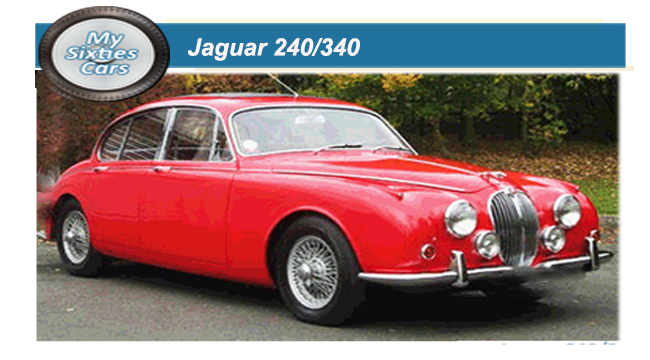
In the mid-Sixties Jaguar were at the risk of falling into the trap of producing too many models at the same time.
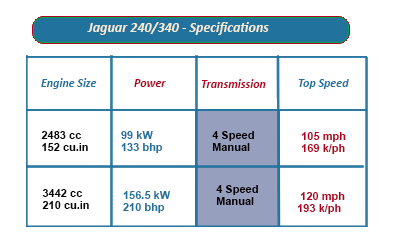 To prevent this from happening, Sir William Lyon gave the order to implement a new classification style to ensure that every model has its own identity.
To prevent this from happening, Sir William Lyon gave the order to implement a new classification style to ensure that every model has its own identity.
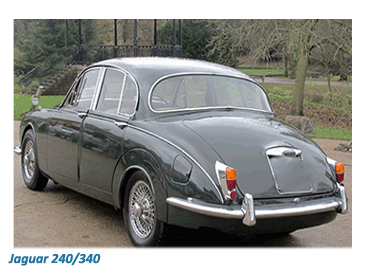 In September 1967 the rationalisation program reached the Mark II series, meaning that 2.4-litre engine version became the Jaguar 240, while the 3.4-litre 3.4 Mark II became the Jaguar 340.
In September 1967 the rationalisation program reached the Mark II series, meaning that 2.4-litre engine version became the Jaguar 240, while the 3.4-litre 3.4 Mark II became the Jaguar 340.
The most painful part of the program was that Jaguar decided to discontinue the fast 3.8-litre (232 cu in) option.
Both of these new/old models that remained were recipients of a secondary design revamp as well as the appropriate insignia on the tail and slimmer bumpers, a minor factor but one that which played a significant part in making the cars look long and slender.
![]()
 The 240 now came fitted with a 2483cc, 133bhp engine, while both the 240 and 340 came with a revised cylinder head and dual exhaust system while their engines were fitted with twin SU HD6 carburettors to increase their power output.
The 240 now came fitted with a 2483cc, 133bhp engine, while both the 240 and 340 came with a revised cylinder head and dual exhaust system while their engines were fitted with twin SU HD6 carburettors to increase their power output.
P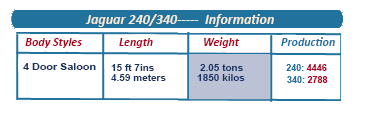 urists of the time scoffed at such streamlining, and even today the 240/340 range remains one of the least favoured models by Jaguar aficionados.
urists of the time scoffed at such streamlining, and even today the 240/340 range remains one of the least favoured models by Jaguar aficionados.
More importantly, they were also appreciably faster.

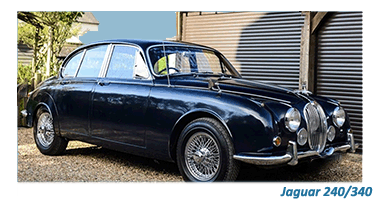 The 240 and 340 were little more than `run-out' versions of the Mk II- an undeniable part of a short-term strategy to fill the production gap until the new-generation XJ6 was ready for release in 1968,
The 240 and 340 were little more than `run-out' versions of the Mk II- an undeniable part of a short-term strategy to fill the production gap until the new-generation XJ6 was ready for release in 1968,
Demand for the Jaguar 240s and 340s could not be described as overwhelming with just 7246 cars sold during the models' two-year production run.




